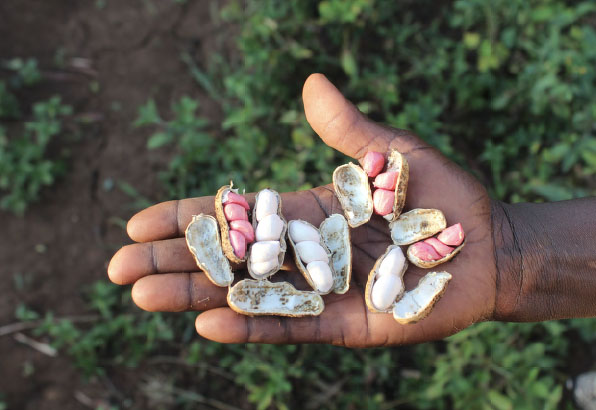
A fairly common pitfall in groundnut production is that farmers wait until plants begin to die back or are impacted by disease and drought to harvest.
Timely harvest may be the most impactful way to manage risk of aflatoxin. Studies show that conditions become more favorable for A. flavus to spread when soil and air temperatures rise (25-30 degrees C), relative humidity increases (70-85%) and drought sets in. At the same time, pests may begin to damage the pods late in the season, adding another risk factor for aflatoxin.
Since the pods form throughout the season and grow underground, they are hidden and at different maturity levels. Farmers can track the maturity of the crop by comparing the actual days since planting against the estimated days to maturity for the variety.
They also can sample a few plants from across the field and use manual testing methods, such as scraping the pod to assess the color of inner layer. [Find out more about how to test for maturity in the Agronomy course.]
The ideal window to harvest is only 1-2 weeks.

